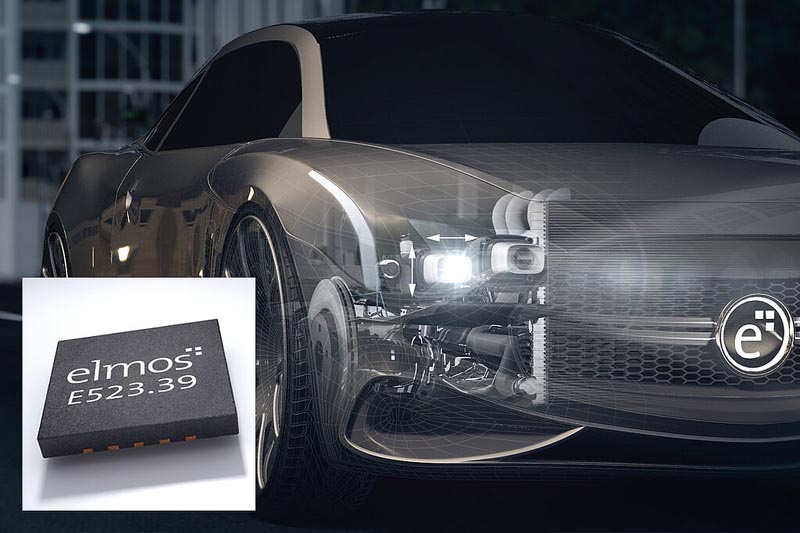E523.39: Fully integrated stall and residual current detection
With the E523.39 Elmos presents a new high-precision stepper motor driver that meets the highest demands regarding smoothness, EMC emissions and error detection. Target applications include headlight adjustment, HVAC flap control, cruise control, front grill adjustment or fluid valves. Furthermore, the module can also be used in industrial environments or for building automation.

With a supply voltage of 5 V to 42 V, the output stages of the E523.39 deliver a maximum current of either 400 mA, 800 mA or 1200 mA. In each of the 3 modes the programmable motor current curves achieve a very precise current resolution of 8 bit. The step resolution of up to 1/32 microstep as well as multiple setting options such as 8 PWM frequencies, 7 decay modes or user-defined waveforms enable the acoustic noise emissions in the application to be reduced to a minimum and EMC performance to be optimized. At the same time, the E523.39 only needs a minimum number of external components, which contributes to a cost-efficient BOM. Even with very small capacitances at the motor outputs, an ESD strength of over ±8 kV (HBM) can be achieved there.
Other outstanding features of the E523.39 are the integrated measurement and diagnostic functions: For example, the complete stall detection is performed internally, i.e. no evaluations with external MCUs are required. The stall detection works extremely reliably even at low speeds, challenging environmental conditions and different types of gears. This enables the application to work with very precise position information.
In addition, there is a new, unique residual current detection which detects even the smallest residual currents in the motor or wiring system. Many faults can be diagnosed preventively before the drive fails to function and the system fails. This makes the E523.39 an ideal component in safety-relevant applications.
For applications where a holding current must be applied to the stopped motor, the E523.39 enables an "Adaptive Holding Torque". The energy consumption for the holding current over the lifetime can thus be reduced by up to 90%. The E523.39 therefore offers a unique opportunity to reduce the CO2 emissions of the associated vehicle components in combination with innovative diagnostic functions.
